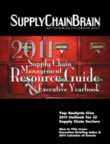
Visit Our Sponsors |
|
|
|
|
|
|
|
|
|
|
|
|
|
|
|
|
|
|
|
|
|
|
|
|
|
|
|
|
|
|
|
|
|
|
|
|
|
|
|
|
|
|
|
|
|
|
|
|
|
|
|
|
|
|
|
|
|
|
|

Analyst Insight: A remarkable number of executives attempt to manage large inventory investments with lots of data but very little information -just pages full of numbers, none of which is very meaningful without (often significant) effort. And, frequently, it's just data from the current period, minimizing the possibility of understanding whether performance is improving or declining except by working from memory at the very highest levels. The firm's owners, and the executives in charge, deserve much better.
-Ralph Cox, principal at Tompkins Associates
Surprisingly, in some very successful firms, the simplest questions are the most difficult to answer - basic questions regarding inventory cost and customer service performance. For example, reasonable questions, like the following:
"Are our order fill rates up for every safety stock class in each DC over the same time last year?" or
"Were our promotion lift forecasts more accurate for all product families this fall than they were last spring?"
If the answer is "no," the next question is sure to be "why?" Then the emails commence. Heaven forbid that the executive would want to understand to what extent each of the underlying driving forces or root causes contributed to any change.
The lack of easily accessible, meaningful information and the associated impediments to insight into inventory performance over time is a weak link, waiting to fail and hurt the bottom line. Selecting what to report and, perhaps more importantly, at what level of product, organizational and logistical aggregation to report and with what drill-down capability is an art.
Creative and thoughtful exploration of options - especially with the actual figures - can yield important possibilities. Having useful reports that provide quickly comprehensible performance change from season to season is a necessity for good inventory decision-making. The best reports are graphical and dynamic via the use of menus.
The Outlook
Business intelligence and data warehouse query tools have great potential for assimilating data and displaying just what is needed. The best of them are flexible and easy to evolve as events unfold - a crucial differentiator. However, the first step is recognizing the importance of viewing and understanding performance over 12 to 24 months to provide context. Then, expect clearer information from your systems and organization. The data is all there, but you need understanding - something infinitely more valuable.
RELATED CONTENT
RELATED VIDEOS
Timely, incisive articles delivered directly to your inbox.


